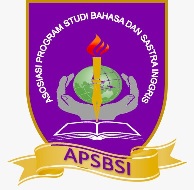FACTOR INFLUENCING THE USE OF CODE-SWITCHING IN WALK THE TALK 2 PROGRAM
Abstract
The aims of this research are, first to describe any code switching occurences found in Walk the Talk 2 and second to explain the factors that influenced the use of code-switching in the Walk the Talk 2 program. In conducting the research, I use qualitative approach. This research was analyzed a television program called Walk the Talk 2 by doing some steps. First, the video downloaded from the internet, later the videos were being transcribed. Next, I select the utterances that considered as code-switching. Finally, I analyzed the factor that influenced the use of code-switching and the function of code-switching on Walk the Talk 2 program. The study shows that that there are 110 functions in the 88 instances of code switching in this research. The proportion of those functions is as follows: there are 3 instances of quotation, 3 of addressee specification, 18 of interjection, 58 of reiteration, 7 of message qualification, 6 of personalization and objectivization, and 15 of facility of expression. From the analysis, the most frequent function found in Walk the Talk 2 program is reiteration. Reiteration function occur to clarify or emphasize what the speaker has said before. Besides, it can be concluded that one instance of code-switching is intended for more than one factors and functions. Considering the result, I would like to suggest to the reader to open their horizon that sociolinguistics can be studied not only by reading text book, but there are also many media that can be used as a tool to learned sociolinguistics. Various media such as radio, internet or television could be an alternative option to learn sociolinguistics. In additon, it is better for teacher or lecturer to use media like radio, internet or television when they are giving lecture about sociolinguistics especially in this case code-switching.
References
Ayeomoni, M.O. 2006. Code-Switching and Code-Mixing: Style of Language Use in Childhood in Yoruba Speech Community. Nordic Journal of African Studies 15(1): 90–99.
Gardner-Chloros, P. 2009. Code-switching. New York: Cambridge University Press.
Holmes, Janet. 2001. An Introduction of Linguistics. 2nd ed. England: Pearson Education Limited, 2001
Ibhawaegbele, O. Faith, Justina N. Edokpayi. 2012. Code Switching and Code Mixing as Stylistic Devices in Nigerian Prose Fiction: A Study of Three Nigerian Novels. Research on Humanities and Social Sciences, Vol. 2, No. 6.
Lewis, M. P. (ed ). (2009). Ethnologue: Languages of the World, 16th Edition. Dallas, TX: SIL International.
Marasigan, Elizabeth. 1983. Code Switching and Code Mixing in Multilingual Societies. Singapore: Singapore University Press.
Kracht, M., U.Klein. 2014. The Grammar of Code Switching. Germany: Universität Bielefeld, Postfach
Wardaugh, R. 2002. An Introduction to Sociolingusitics. Massachusetts: Blackwell Publisher.
Wardaugh, R. 2010. An Introduction to Sociolinguistics (6th Ed.). UK: Wiley-Blackwell.







